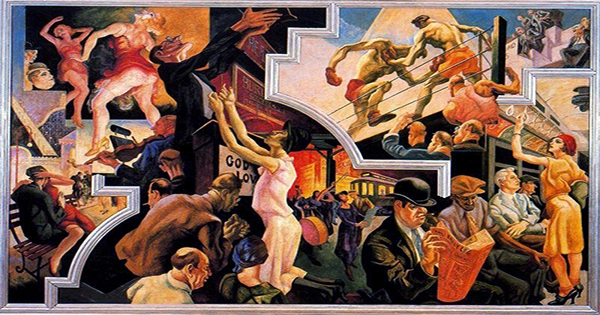People are speculating about the possibility of time travel after spotting what appears to be a Native American man peering at a smartphone while making the “I’m sorry, I have to accept this” hand signal in a painting from 1937.
Mr. Pynchon and the Settling of Springfield is a painting that shows William Pynchon, the colonist and founder of Springfield, Massachusetts, while the city was growing.
The Meritorious Price of Our Redemption, written by Pynchon in 1650, was the first book to be both banned from Boston and burned on the Boston Common. Strangely, as Vice notes, famed author Thomas Pynchon was descended from William Pynchon. All of this is quite fascinating, but what is particularly off-putting is the presence of a Native American man who looks like he just read a nasty tweet.
The image was shared on Reddit, where it drew comments like, “sure as hell does. Including the look on guy’s face like he just saw his most recent post got downvoted into oblivion,” while others imagined that the man bound behind the “phone user” is from the modern era (apparently, his trousers look vaguely modern) and that those around him have taken the phone away from him.
Despite being painted decades before they were even imagined, the artist Umberto Romano painted another image that resembles a woman watching an iPad.
The best plausible theories we have come across are that he is looking at an axe head or that it is a hand mirror, both of which would have been common items to trade at the time the painting was created. Then, after returning to 1937 and accidentally revealing himself by being painted into a portrait of 1650 by checking his notifications while still-life modeling, he decided that a mirror was more likely than someone actually developing time travel (presumably in some distant future that for some reason still uses the iPhone 11).














